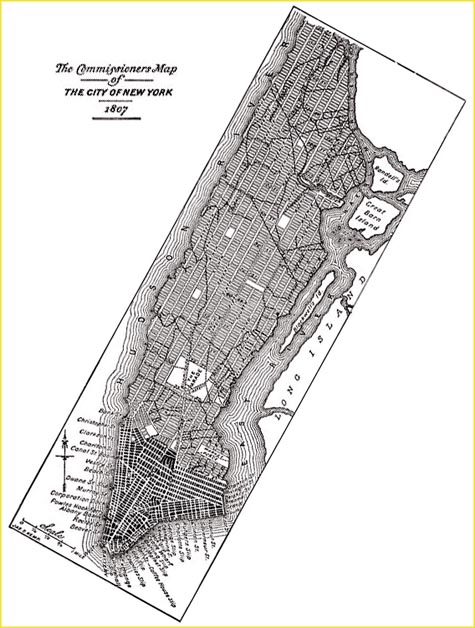So I decided to put it up on BLDGBLOG.
 As it happens, then, Manhattan's mathematically rational street grid is actually rotated 29º off the north-south axis – and this angle has interesting astronomical side-effects.
As it happens, then, Manhattan's mathematically rational street grid is actually rotated 29º off the north-south axis – and this angle has interesting astronomical side-effects. In other words, because of the off-center orientation of Manhattan's street grid, you can only see the setting sun "down the middle of any crosstown street" on two specific days of the year: May 28 and July 13.
July 13 is, of course, next week – so watch out for it.
Manhattan is a solar instrument that only works twice.
So, because of historical decisions made about the logic and purpose of urban planning – and because of the declination of the Earth's poles – the streets of Manhattan are aligned with the setting sun only two times a year.
Which means that New York is a kind of Hugh Ferrisian Stonehenge: casting shadows on itself till the days when it can truly begin to shine.
In any case, Roberts points out, interestingly, that a rectilinear street grid was not the only arrangement of space considered viable for Manhattan during its earliest days of European settlement:
- William Bridges, the city surveyor, explained that one of the commissioners' chief concerns was ''whether they should confine themselves to rectilinear and rectangular streets, or whether they should adopt some of those supposed improvements, by circles, ovals and stars, which certainly embellish a plan, whatever may be their effects as to convenience and utility.''
Manhattan is thus now "a nearly perfect place to practice taxicab geometry," Roberts continues: it is an island "in which the shortest distance between two points is rarely a straight line."
And yet Manhattan is also an island of astronomical coincidence that, like any structure standing on the surface of the Earth, lines up with the heavens in its own peculiar way.
(Earlier on BLDGBLOG: The architecture of solar alignments).
No comments:
Post a Comment